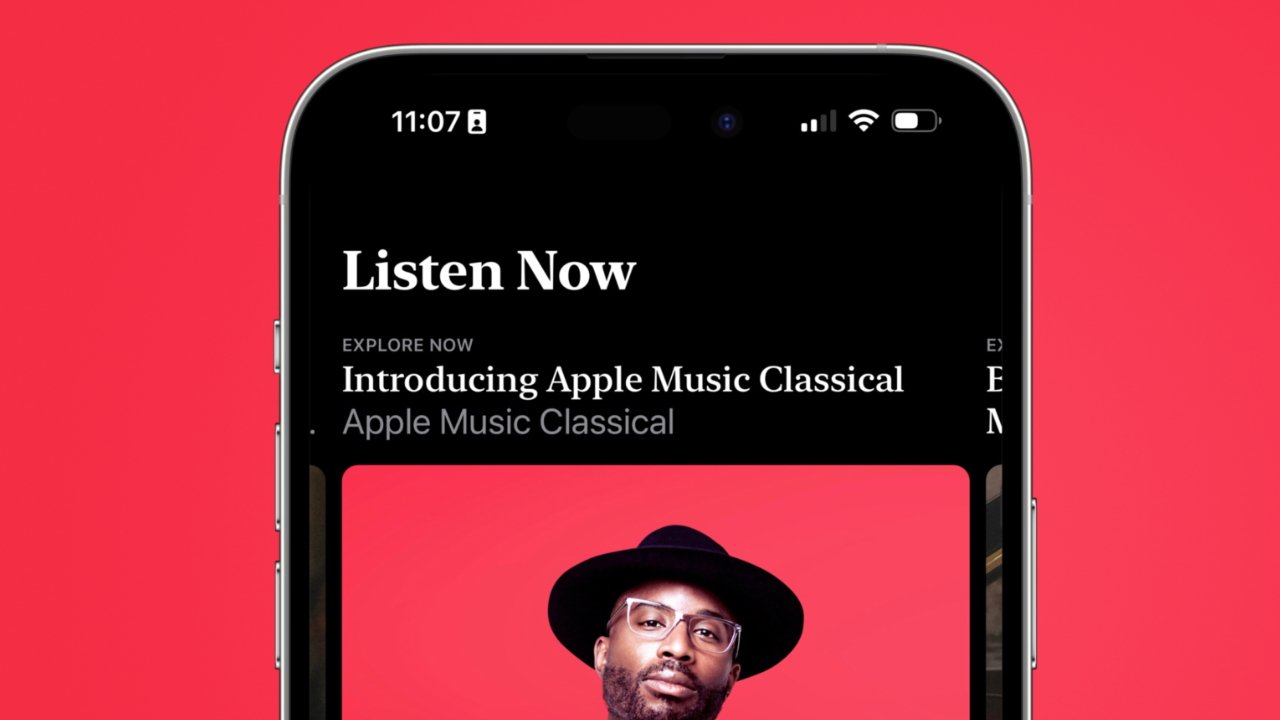The overlap between Apple Music and Classical app is clunky
Apple has explained its reasoning behind separating out classical music into its own app, even as the service remains part of the overall Apple Music subscription.

Apple Music Classical comes out of Apple's acquisition of the Primephonic classical streaming service in 2021. Classical music was already included in Apple Music, so Apple could have subsumed Primephonic's technology, and members, into the regular Music app.
Instead, it's become a separate Apple Music Classical app, even though subscribers get it by paying for the regular Apple Music tiers. And even though there are still quite clunky overlaps between the Music and classical apps.
"Classical music is different," says Apple in a new support document. "It has longer and more detailed titles, multiple artists for each work, and hundreds of recordings of well-known pieces."
"The Apple Music Classical app is designed to support the complex data structure of classical music," it continues.
This support document does not address the question of why Apple Music Classical is -- at present -- solely an iPhone app. What it does say is that if users add music to their library in the Apple Music Classical app, they will then see that playlist in the regular Apple Music app.
Similarly, it's not possible to download any tracks from the Apple Music Classical app -- but users "can use the Apple Music app to download tracks, albums, and playlists that you've added to your Apple Music Classical library."
It's messy because Apple also says that "Recordings, works, and composers won't appear in the Apple Music app and can be accessed only in the Apple Music Classical app."
So while Apple Music Classical on iPhone will play music, it's really a search engine that lets users find tracks that Apple Music can't, and then add them to playlists.
Apple Music Classical is available to subscribers of any Apple Music tier, except the lowest-cost Voice Plan.
Read on AppleInsider

Apple Music Classical comes out of Apple's acquisition of the Primephonic classical streaming service in 2021. Classical music was already included in Apple Music, so Apple could have subsumed Primephonic's technology, and members, into the regular Music app.
Instead, it's become a separate Apple Music Classical app, even though subscribers get it by paying for the regular Apple Music tiers. And even though there are still quite clunky overlaps between the Music and classical apps.
"Classical music is different," says Apple in a new support document. "It has longer and more detailed titles, multiple artists for each work, and hundreds of recordings of well-known pieces."
"The Apple Music Classical app is designed to support the complex data structure of classical music," it continues.
This support document does not address the question of why Apple Music Classical is -- at present -- solely an iPhone app. What it does say is that if users add music to their library in the Apple Music Classical app, they will then see that playlist in the regular Apple Music app.
Similarly, it's not possible to download any tracks from the Apple Music Classical app -- but users "can use the Apple Music app to download tracks, albums, and playlists that you've added to your Apple Music Classical library."
It's messy because Apple also says that "Recordings, works, and composers won't appear in the Apple Music app and can be accessed only in the Apple Music Classical app."
So while Apple Music Classical on iPhone will play music, it's really a search engine that lets users find tracks that Apple Music can't, and then add them to playlists.
Apple Music Classical is available to subscribers of any Apple Music tier, except the lowest-cost Voice Plan.
Read on AppleInsider

Comments